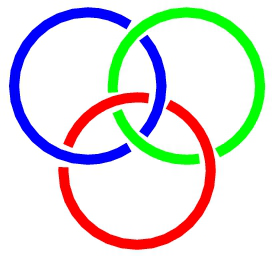Prof.
Martial Ducloy
(Université Paris 13)
13/10/2008, 15:00
Talks at Critical Stability V (Erice, October 2008)
Normal
he long range interaction between atoms and material surfaces or nanobodies is a case study of a pure quantum system interacting with macroscopic or mesoscopic systems. This field is of increasing importance owing to the fast development of nanoscience and nanotechnologies. The confinement of atoms inside a nano-size space strongly alters the internal properties of the atomic system and its...
Prof.
Charlotte Elster
(Ohio University)
13/10/2008, 15:35
Talks at Critical Stability V (Erice, October 2008)
Normal
Traditionally three-nucleon calculations are carried out by solving Faddeev
equations in a partial wave truncated basis, working either in momentum
or in coordinate space. In Ref.~\cite{1} the Faddeev equations were solved
directly as function of vector
variables for scattering at intermediate energies. The key advantage of
this formulation lies
in its applicability at higher energies,...
Dr
Arnoldas Deltuva
(Centro de F ́ısica Nuclear, University of Lisbon, Portugal)
13/10/2008, 16:10
Talks at Critical Stability V (Erice, October 2008)
Normal
There is a long history of theoretical prescriptions for the solution of the Coulomb problem
in three-nucleon continuum. Most of them employ configuration-space framework [1, 2, 3]. In
contrast, we solve momentum-space integral equations. The method we use for the inclusion
of the Coulomb interaction is based on the ideas proposed in Ref. [4] for two charged particle
scattering and...
Dr
Pavel Kurasov
(Lund University)
13/10/2008, 17:00
Talks at Critical Stability V (Erice, October 2008)
Normal
It is well-known that the celebrated Fermi delta potential model
[1,2] leads to
non-trivial scattering in the s-channel only. We propose
a new family of point interaction models which may be
used to describe particles with non-trivial interaction also
in the $p$-channel while preserving exact
solvability and point character of the interaction [3]. These
models are given by self-adjoint...
Dr
Georg Bruun Bruun
(Niels Bohr Institute, Copenhagen, Denmark)
13/10/2008, 17:35
Normal
A low energy effective theory based on a microscopic multi-channel description of the atom-atom
interaction is derived for the scattering of alkali atoms in different hyperfine states [1]. This
theory describes all scattering properties, including medium effects, in terms of the singlet and
triplet scattering lengths and the range of the atom-atom potential and provides a link between a...

